


Marshall Strabala
马溯Marshall Strabala is Shanghai Tower's chief architect. It is the high-rise buidling that has made him the designer behind the world's most beautiful skyscraper. Also, because of this building, his name is inseparable from Shanghai. He can now blurt out the Chinese word “Shanghai Zhongxin” easily.



Dimitri Kerkentzes
迪米特里Dimitri Kerkentzes, Deputy Secretary General of BIE is an old friend of the Expo 2010. During the Expo, he spent seven months as a BIE representative to Shanghai. He is affectionately called Xiao Di by his Chinese friends here. Standing at the museum, the Expo eight years ago still remains strong in his mind.



Satoshi Murata
村田淑Baosteel is not only the epitome of China's reform and opening up but also an example of Sino-Japanese cooperation. Nippon Steel& Sumitomo Metal Corporation (NSSMC) is a key part of this story. Head of NSSMC Shanghai Representative Office, Satoshi Murata, was sent to Shanghai 3 years ago. Though he has not experienced the 40-year story himself, he is more than familiar with the friendship between NSSMC and Baosteel.



Albert Kong Ping Ng
吴港平Sitting in his office on the 50th floor of the Shanghai World Financial Center, the city’s second tallest skyscraper, Albert Kong Ping Ng, EY’s China Chairman and Greater China Managing Partner, is a witness to the speed and level of Shanghai’s development since the reform and opening up.



Joaquim NASSAR
卓尔清Joaquim NASSAR, the French dean of The SJTU–ParisTech Elite Institute of Technology is the first to receive Shanghai’s first unified work permit for foreigners. He says, “I am not surprised to see Shanghai becoming the first city to put forward the convenient foreigner’s work permit.” For him, Shanghai is the perfect city where cultures of home and abroad are merged.



Franco Terenzi
泰伦齐The 77-year-old Franco Terenzi is the Former Captain Regent of the Republic of San Marino, a microstate in north ern Italy, as well as the current President of the San Marino-China Friendship Association. The man who has visited China 58 times is an enthusiast of the country and has been devoted to friendly cooperation between China and San Marino for many years. For China’s reform and opening up, he is a star witness.



Fujimoto Michio
藤本道生In recent years, when spring comes to Shanghai, the wisteria in Jiading and the cherry flowers in Gucun Park are top tourist attractions during the blossom seasons. But the wisteria vine does not grow to its current size in a day. There is a story spanning almost thirty years behind the present-day Jiading Wisteria Park. Fujimoto Michio has spent the last 30 years contributing to Sino-Japanese friendship and the wisteria park is the crystallization of his efforts.



Tourism Representatives
上海世界旅游博览会旅游机构部分代表Early each summer, the Shanghai World Travel Fair (SWTF) is hosted in Shanghai, gathering travel agencies, industry professionals and travel enthusiasts. With outbound travel as the ultimate specialty, SWTF has attracted many loyal participants, including those from the Czech Republic, Peru, Malaysia, Tunisia and Turkey.





Lisa Lu
卢燕With the reputations of “ambassador of the Western and Chinese cultural exchange”, “the first overseas achieving Magnolia Opera Award”, “Oscar lifelong judge”, Lisa Lu, a 91-year-old Chinese-American performing artist is impressive for her elegant temperament and modest attitude. The elderly who has lived on the other side of the Pacific for 70 years witnessed the opening up of Chinese culture.



Jeffrey S. Lehman
雷蒙Jeffrey S. Lehman, Vice Chancellor of NYU Shanghai. Early this year, was honored as one of the 40 most influential foreign experts in China by the State Administration of Foreign Experts Affairs (SAFEA) for his contribution to China's reform and opening up, especially in Sino-US educational exchanges and cooperation.





Leonard Pratt
白伦Amazed at China's opening to the outside world, he decided to record this extraordinary change in video when he came to China more than 30 years ago. Today, recalling the past, his eyes glistened with tears.





Michelle Teope-Shen
王煊熔Since the Reform and Opening up in China 40 years ago, Shanghai has seen a huge influx of foreigners into the city and a lot of international communities have emerged in response to this trend. As the city’s desire for overseas high-end talents grows, more foreigners and expatriates are expected to move to Shanghai in the future. It is a challenging and urgent task for local authorities and community workers to create a good living environment for these foreigners and expatriates.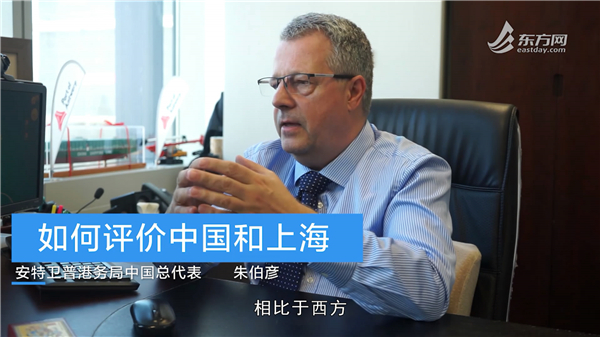




Jan Van der Borght
朱伯彦In an office with ship models on a windowsill, Jan Van der Borght, representative of Belgium's Antwerp Port Authority in China, told reporters about the story that he led to the exhibition of the lost Chinese ancient ship models in China.



Claude Maillot
马优“When I came to Shanghai 30 years ago, the first impression was the large population. There were very few cars on the street and bicycles everywhere. There was only one underground tunnel in the city, and some shipyards could be seen on the Huangpu River...” Claude Maillot said sentimentally.



Hata Norio
秦范雄Since his days in school, Hata Norio harbored a wish to visit China. After graduating from college, he discovered a company that attended an industrial exhibition held in Beijing. Without hesitation Hata Norio joined this company with the hope to visit China one day. Never had he thought that he would live in China for more than 50 years and become the first person to be issued a Chinese green card, the People’s Republic of China’s Permanent Residence Certificate.
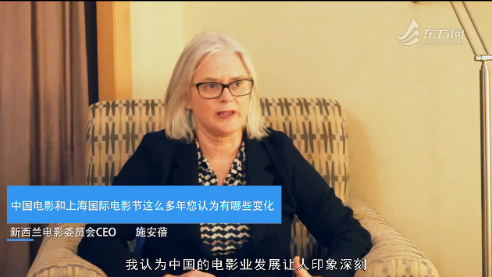




Annabelle Sheehan
施安蓓The 21st Shanghai International Film Festival was in full swing in the second half of June. This year also marks the 40th anniversary of China’a reform and opening up, so how do those foreign film makers feel about this policy? With these questions, our reporter had an interview with Annabelle Sheehan, new CEO of the New Zealand Film Commission to find out the answers.


Frantisek Musil
弗兰基西柯·慕斯With a history of less than three years, the China-Czech TCM Center in Hradec Kralove has received more than 20,000 patients, establishing a good reputation in the Czech Republic. This has made Dr. Frantisek Musil and his colleagues very happy.“We have more than 80 percent satisfied patients, which is a very high percentage, because the normal average percentage of satisfied patients is half and half, 50 percent. As I said, in our TCM center, the average percentage of satisfied patients is more than 80 percent, which means a very big success.”



John Hsiang
项乃强Now Shanghai has 25 foreign-invested medical institutes (including investments from Hong Kong, Macau and Taiwan) and Shanghai Jiahui International Hospital, which went into operation last October, is the first tertiary general hospital in Shanghai to be foreign-invested. As the Chief Medical Officer (CMO) of Jiahui Health, John Hsiang sees not only the modernized infrastructure brought by reform and opening up but also the amazing response of people with open minds.



Habib Ur Rehman
哈比Influenced by his father, Habib came to study in Shanghai in 2009 and stayed here with his father and brothers after graduation. The family runs a handmade carpet store. Besides his identity as an ordinary foreign businessman, Habib is also one of the first foreign community security volunteers in Shanghai, facilitating a series of new policies such as regulation of traffic violations and the secure management of fireworks.



Meg Utterback
胡梅Elegant and affable is the first impression Meg Utterback, an American female lawyer, makes on us. Meg came to China to study in the 1980s. After graduation she went back to America. Many years later, she returned to China and has been working and living here for more than ten years.



David Waxman
大卫·韦克斯曼In July 2011, David Waxman resigned his job at the University of Sussex and came to Fudan University with his wife Marie Harder, beginning a full-time academic position at Fudan. Ever since, David has devoted himself to doing research and making a contribution to China’s scientific research cause.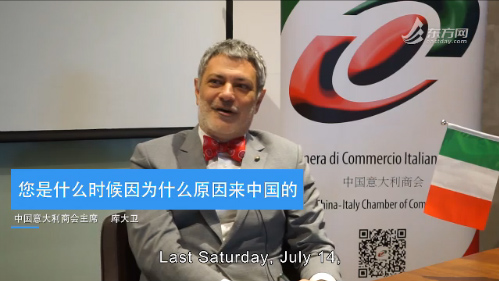




Davide Cucino
库大卫China and Italy, two ancient civilizations, were the starting points of the ancient Silk Road. The exchanges between the two countries have a long history and were recorded in the Travels of Marco Polo. Nowadays, as the intersection of the "Silk Road Economic Belt" and the "21st-Century Maritime Silk Road", Italy is achieving an historic reunion with China through the “Belt and Road initiative”. This will not only promote the two countries'economic and trade growth, but also drive and benefit the economic construction of all the countries along the Sino-European Economic Belt.



Stephen Shafer
谢思明Hailing from the US, Stephen Shafer began to serve as president of 3M Greater China two years ago. Before his interview with us, he said that he was not very good at Shanghai dialect and Mandarin. However, when he blurted out the Chinese word for "fast" to describe the speed of China’s development, he might not realize that his Mandarin was actually pretty good.



Daryoush Ziai
施达毓In his view, China's reform and opening up, especially urbanization and real estate development, has brought huge opportunities to Schindler. By the beginning of this century, China had not only developed into the world's largest elevator market, but also possessed the world's strongest elevator production capacity. It is truly the world's factory and greatest consumer market for elevators.



Philippe Gas
郭伟诚As a Parisian with a romantic sense of humor, Philippe Gas has a special connection with Asia. Having spent years working across the region in destinations such as Tokyo, Hong Kong, Beijing, the Philippines, Singapore and Malaysia, in 2014 he finally settled down in his second home - Shanghai.



Michiaki Oguri
小栗道明Among the foreign businesses in the Shanghai Hongqiao Economic and Technological Development Zone, Japanese companies and institutions take up a large portion. Among them is JETRO (Japan External Trade Organization) Shanghai. Funded by the Japanese government, JETRO has played a crucial role in promoting Sino-Japanese trade and investment exchanges and Sino-Japanese economic cooperation.



Akira Yonezawa
米泽章Akira Yonezawa, current Executive Officer of Japan Airlines, has been working for the company for 34 years since he joined the company in 1984. He once served as Manager of the Shanghai Office at Japan Airlines between 2008 and 2010. This is the second time Akira has taken on a challenge in China.



Caroline Maggipinto
“The first time I came to Shanghai, China, I was surprised and almost stunned,” said Caroline Maggipinto, an Italian teacher describing her first trip to Shanghai as part of the Shanghai International Youth Interactive Friendship Camp.



Michael Luevano
吕华勇“When you look at the time frame, twenty years is actually a very short time. And to see from 1995 to 2018 what has been accomplished is miraculous,” said Michael Luevano, Vice President & Executive Director of Shanghai Juss Event Management Co., Ltd.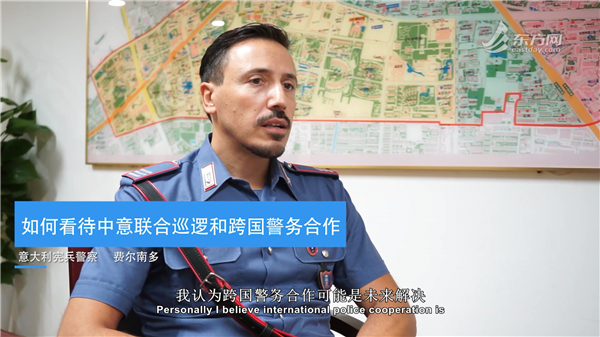




Fernando Giorgi
费尔南多Since the beginning of the reform and opening-up policy, the friendly relationship between China and Italy has continued to develop with increasing cooperation and exchanges in various fields. According to the Memorandum on Joint Police Patrol signed by the Ministry of Public Security of the People’s Republic of China and Italian Ministry of Interior, the Chinese and Italian police have implemented a program on joint patrol in two countries.
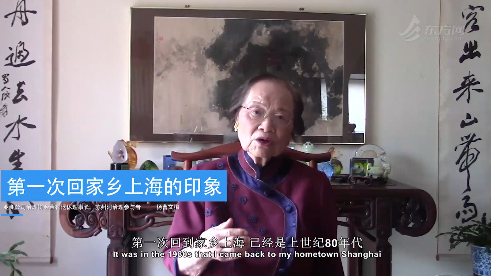




Linda Tsao Yang
杨曹文梅Linda Tsao Yang, Chairwoman Emeritus of Asian Corporate Governance Association, was born in Shanghai, China, and immigrated to the U.S in 1946. From 1993 to 1999, she was the U.S. Ambassador and Executive Director to the Board of Directors of the Asian Development Bank in Manila.


Noyan Rona
诺扬Having been in China for three decades, Noyan Rona, who is known as a “Foreign Lei Feng” in Shanghai, cherishes his “exclusive memory” of China’s reform and opening up. From a young foreign student to a warm-hearted Shanghai resident, he shows us his Chinese heart and his love for Shanghai.



Yukari Tsuru
鹤由香里“Starting from 2006, I visit Shanghai every year because of the China-Japan-Korea Children’s Painting Exhibition. Each time I come here, I am impressed by the speed of Shanghai’s development,” said Yukari Tsuru at the opening ceremony of the sixth China-Japan-Korea Children’s Painting Exhibition hosted by Bellpo Organization. As president of the organization, Yukari had an interview with Eastday.com.
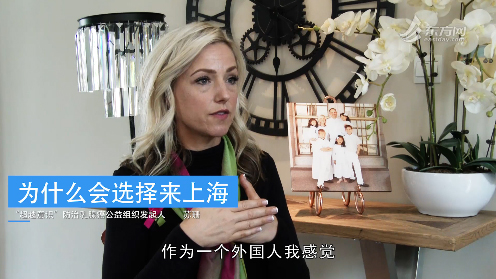




Suzanne Calton
苏珊·卡尔顿Founded in 2011, More Than Aware is a charity organization started by a group of expat women here in Shanghai. More than Aware focuses on lifestyle prevention and the recovery of breast cancers and encourages people to turn awareness into action.The annual Family Fun Run held at Century Park in Pudong is the largest charity activity organized by foreigners in Shanghai.


Hideyuki Hoshiya
星屋秀幸He was born in 1950 in the city of Gifu, the only place with a name of Chinese origin in Japan. In 1972, China and Japan normalized their diplomatic relations and when graduation approached, he desired to be involved in China-related jobs. So he joined Mitsui & Co, an integrated Japanese commercial firm. In 1979, he came to China among the first batch of exchange students of Mitsui & Co. In 1995, he came to Shanghai as the General Manager of Mitsui & Co Shanghai and later received two Magnolia Awards. He came back to Shanghai as the General Manager of the Shanghai World Financial Center in 2014 and was granted a permanent residence permit before he moved back to Japan. He is Hideyuki Hoshiya, a Japanese with deep ties to China.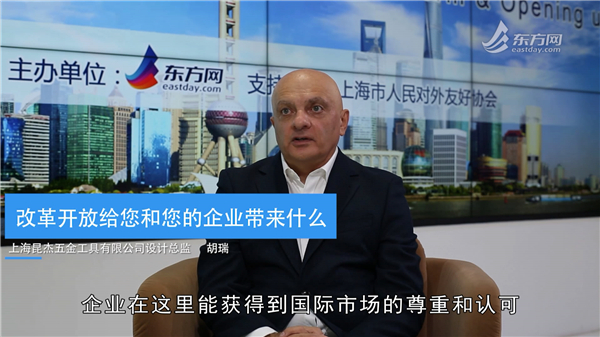




Darbinyan Hrayr
胡瑞“China has a long history and 40 years should be not a long time. I think these 40 years is just a warm-up for China and major achievements are ahead.” said Darbinyan Hrayr, an Armenian expert from Shanghai Kunjek, a wholly-owned subsidiary of the Germany-based KUNJEK WERKZEUGE GmbH. As the R&D director of the subsidiary company, Darbinyan started working in Shanghai in 2001 and has witnessed the development of “Made in Shanghai” over these 17 years.



Maurice Greenberg
格林伯格One day in the fall of 1989, Maurice Greenberg, godfather of international insurance, and Henry Kissinger, former U.S. Secretary of State, had a meeting with then Shanghai mayor Zhu Rongji in a hotel in Shanghai’s Puxi area. Looking outside the window, Zhu Rongji pointed to Pudong, which was a field at that time, and told his foreign guests: I feel in maybe two or three years, there will be a city here.“I thought he was kidding,” said Mr. Greenberg, who realized later that Zhu was right.“With the right leadership and a lot of vision, changes came very quickly.”



Michael R. Phillips
费立鹏A few desks against the wall; photos and professional books on a simple bookshelf; cockroach killers under the sofa—this is what the office of Michael R. Phillips is like. Hailing from Canada, Michael is a Canadian who can speak Chinese fluently. He is Director of the Suicide Research and Prevention Center of the Shanghai Mental Health Center at Shanghai Jiao Tong University School of Medicine. He is a professor in Psychiatry and Global Health at Emory University. He is also Director of the WHO Collaborating Center for Research and Training in Suicide Prevention.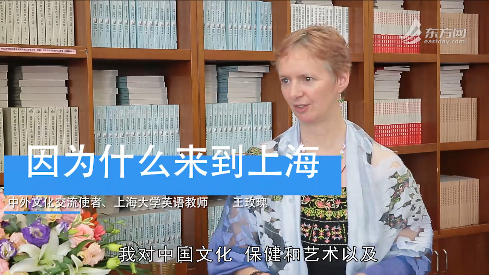




Rose Oliver
王玫瑰Since the reform and opening up that swept China, and with the rapid economic development, a large number of foreigners have flocked to Shanghai. Among them are not only white-collars bustling between buildings or night owls appearing in the night bars in downtown areas. Someday you might run into a foreign female Tai Chi master dressed in traditional white Tai Chi uniform teaching Tai Chi in a local park. She is Rose Oliver, MBE (Member of the Most Excellent Order of the British Empire), a Shanghai Magnolia Silver Award winner and founder of Double Dragon Alliance, an organization dedicated to celebrating martial arts and other Chinese culture, and Coordinator of International Teaching Faculty at Shanghai University.


Maximilian Foerst
福斯特As a representative of the foreign companies in the Shanghai FTZ, Maximilian Foerst is fully aware of what that means. “I must say here the pilot FTZ has been extremely constructive.” Upgrading from a bonded area, the zone has successively launched a range of measures to promote the simplification of trade, finance and customs, which have proved to be efficient.



Bryan Keith Fordham
With a brown plaid shirt and a soft voice, Bryan’s gentlemanly manners match his identity as a teacher. However, this seemingly quiet young man has being longing for unfettered freedom and likes to explore the world. And that was exactly the reason why he came all the way to China.



Tanimura Shinji
谷村新司"…The starlight leads the way; listen to the whisper of the breeze; I am pursuing my dream with zest; my dream is peace…", when the music started and Tanimura Shinji sang the Chinese version of his famous song "Star", the audience burst into a resounding chorus of applause.


Prof. Dr. Jochem Heizmann
海兹曼Entering the 21st century, though production of old Santana cars has stopped, they have left an indelible mark in China’s history. Thanks to China’s reform and opening up, Santana became a household name across the country. This is the legend of Volkswagen in China. Today, 40 years after the policy of reform and opening up was launched, while looking back on the group’s history in China, Prof. Dr. Jochem Heizmann, President and CEO of Volkswagen Group China, said he has tremendous respect for a forward-thinking and strategic decision made in the 1980s.



Steve J. Kulich
顾力行As a scholar, Steve J. Kulich is now Executive Director of Shanghai International Studies University’s (SISU) Intercultural Institute (SII) and engages in research on intercultural values and identity. In a modest library room at SISU, we met Steve – the same room where the first segments of the SISU-FutureLearn “Intercultural Communication” MOOC course were filmed, taught twice a year and to date enrolling 45,000 online learners around the world. Through him and the SISU Educator team, Chinese students meet the world and the world gets to know more about intercultural aspects of Chinese cultural identities, values, and communication styles.



Toyoki Oka
冈丰树At the Annual Conference of the Boao Forum for Asia (BFA) held in April, 2018, Chinese President Xi Jinping delivered a keynote speech, announcing to the world a range of major initiatives including the wider opening up of the financial industry. As an attendee of the forum, Toyoki Oka, Chairman of Mizuho Bank China and Executive Officer of Mizuho Bank, was very excited, believing that China’s policies to allow more foreign investment in banking and securities firms and its plan to scrap limits on foreign holdings in asset management companies are very attractive and welcoming in the long run.



Jun Xu
徐军A Tsinghua and Cornell University graduate, Jun Xu once participated in the development of China’s homemade ARJ21 jet and led a team of 500 people doing technical R&D for the C919, China’s first domestically-built passenger jetliner. Claiming himself to be simply one of China’s aviation workers, Dr. Xu remains modest and stays true to his original aspiration.



Vicente G. Loscertales
洛塞泰斯Back in 2010, Shanghai was a scene of jubilation because of the World Expo 2010, and many people got to know a bearded Spanish man called Vicente G. Loscertales, Secretary General of the Bureau International des Expositions (BIE). Eight years later, at the World Expo Museum, Mr. Loscertales came back to Shanghai again.
